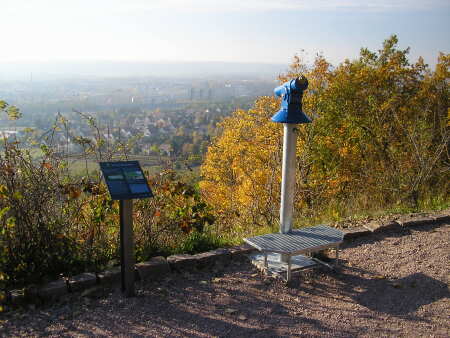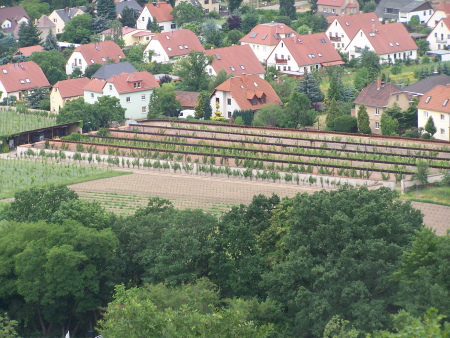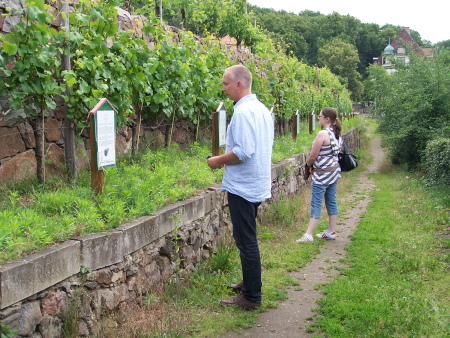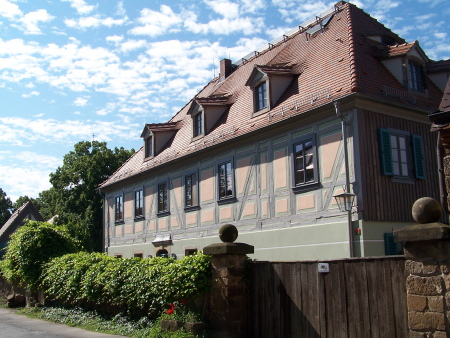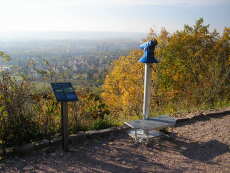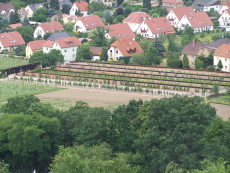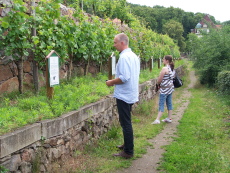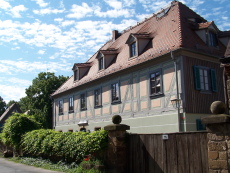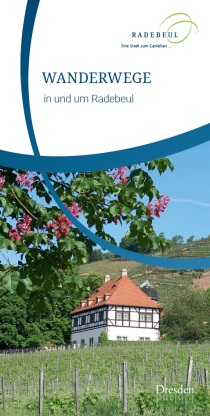Hike through Zitzschewig
Our hike begins at the tram stop on tram line 4 "Gerhart-Hauptmann-Straße" and leads along Langenbergweg. You cross Mittlere Bergstraße and continue uphill along Langenbergweg.
To your left is the Krapenberg. It was demonstrably used as a vineyard from 1590. On the right-hand side of the Krapenberg is the Krapenburg, which was built in 1710 and renovated in 1988. After another small climb, turn right onto the Zechsteinweg. An educational wine trail was created here in co-operation between the Zitzschewig winegrowing community and the Radebeul town council. This was created to familiarise visitors with the wine varieties cultivated in the Elbe Valley.
Approximately in the centre of the Zechsteinweg, on the south side of a vineyard wall, there are three vines of each of the Elbe Valley wines, such as Goldriesling, Müller Thurgau, Weißer and Roter Gutedel and Traminer. In total, there are 18 different types of wine. The accompanying panels provide information on origin, site requirements, winter frost resistance, susceptibility to disease, yield and flavour.
After the diverse information about the local wine varieties, it is worth taking a look southwards to the Elbe valley, as you can enjoy an excellent view from here. The Zechstein Trail continues past the Zechsteinhaus, a winery that has existed since the
17th century winery with extensive vineyards and woodland. It has been lovingly renovated in recent years and the vineyard belonging to it has been replanted by local winegrower Friedrich Aust. At the end of the Zechsteinweg, you will see the entrance to the Hohenhaus.
The former vineyard house dates back to the 15th century, when it was used by the bishops of Meissen. It then came into the possession of the Electors and Saxon aristocratic families. In 1832, the merchant Thienemann acquired the estate. It was through Gerhart Hauptmann and his brothers' association with the Thienemann daughters that the Hohenhaus really became famous. In his memoirs, Gerhart Hauptmann called this house "Nest of the Birds of Paradise" and also erected a literary monument to it. The Stechow family owned the Hohenhaus from 1885, during which time it was remodelled into its current appearance. The puppet theatre collection of the Dresden State Art Collections was housed here from 1960 to 2003. It was not until 1985, after extensive reconstruction work, that the Hohenhaus was opened as a museum, displaying a collection of exhibits from around 200 years of puppet theatre art. Today, the puppet theatre collection is housed in the Museum of Saxon Folk Art in Dresden.
Now follow Hohenhausweg downhill and turn left into Mittlere Bergstraße, which you follow until you reach Obere Johannisbergstraße. Turn right into Obere Johannisbergstraße and you will reach the tram stop of the same name on tram line 4 in the direction of Dresden or Weinböhla.
Details of the hike
| Entfernung: | ca. 2,5 km |
|---|---|
| Dauer: | 1 - 1,5 Stunden |
| Höhe: | 80 m |
| Schwierigkeit: | leicht |
In the brochure "Hiking trails in and around Radebeul" you will find these and many other hiking suggestions. Available from the tourist information centre.





